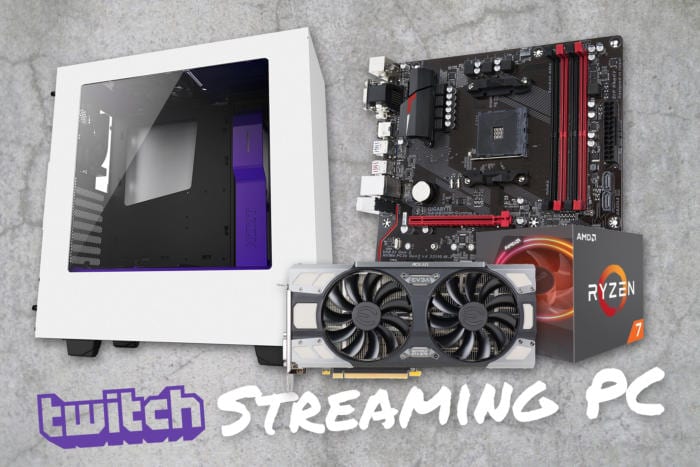So you’re a seasoned PC gamer wondering how to make your gaming experience more social, but without inviting people into your house. Then, you get the utterly unique and one of a kind idea to start streaming your gameplay, you spring into action, preparing to show your battle station off to the world, but what kind of setup do you need to pull this off?
GPU Vs. CPU When Gaming
Well, hey guys. It shouldn’t be surprising, but an upper-range gaming PC is often a good choice for streaming, but there are hardware considerations for streaming that are a little bit different. Typically gaming setups are built around the GPU with your graphics card often being the deciding factor in how nice your games will look, as long as the rest of your rig meets some kind of minimum threshold. But for streaming, your CPU can determine how your gameplay looks to your viewers, be they on Twitch, or another streaming platform.
But why is this? I mean, we’re still talking about how to get the best graphical quality, right? Well remember that the work of rendering the game, that is the act of actually creating the image, has already been done by your graphics card. It’s then your CPU that takes that rendered image and transcodes it into a video format that can be easily sent over the Internet and displayed by your viewers’ web browsers. And if you’ve ever edited video regularly, you’ll probably already know that having a more powerful CPU typically makes video encoding a much easier job.
Now since transcoding is easily split amongst multiple CPU cores, oh and by the way, don’t forget you still have to run the game, too. It is to your advantage to get a CPU with more cores and more threads, especially if you want to stream at 1080P 60FPS instead of 720P. Though, it should be noted that as with anything, there is a point of diminishing returns and an 18 Core processor might not be worth the extra price.
Best CPU for PC Streaming: Core i7 & AMD Ryzen 7
If you want a specific recommendation, a modern 6 Core, Core i7 or more or AMD Ryzen 7 processor or better in your gaming rig should make it a very capable streaming machine. Some streamers, though, actually decide to go a step further and use a second PC to handle all the streaming tasks, using their first rig strictly for actual gaming. This can especially make sense if you already have an older tower lying around because it’s a great way to stream CPU intensive games like StarCraft or Total War without being concerned that your gameplay or your stream quality will suffer as a result.
And one of the reasons this approach is so popular is that your streaming PC doesn’t have to be anything super fancy. You might not even need a dedicated graphics card. You will need a good CPU, but because it’s going to be handling streaming only, you can probably get away with a more basic 4 Core, 4 thread processor. Just make sure that you close all your background programs and have only what you need to stream up and running, if you’re running into trouble.
What about Video Capture?
The other thing you’ll need for your dedicated streaming PC is a way to capture the video output from your gaming machine and deliver it to the software that will encode and transmit your stream, along with any overlays and transitions that you desire. For PC gamers, this can actually be done over your local network using the NVENC hardware encoding engine behind Nvidia’s ShadowPlay feature to send up to a 60 megabits stream of the game over Ethernet to your secondary box where CPU encoding will turn it into a high-quality, 5.5 megabit stream, compatible with Twitch TV.
But, if your PC hardware doesn’t support this method, or if you’re streaming from another device like a game console, the go-to is a capture card. A modern USB 3.0 or PCI-Express capture card will help prevent transmission problems and lag compared to a USB 2.0 capture card. But other than that, you’ll probably have to read or watch reviews to determine exactly which model is best for your needs. Whatever you get, though, make sure that it supports the resolution and frame rate that you want to broadcast.



